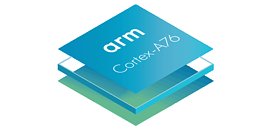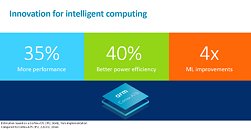Ugreen Sneaks Out the DH4300 Plus Arm Based NAS
Although we did notice a picture of the new model as part of an ad on Ugreen's website last week, there was no product page then, but it was added at some point towards the end of last week. The new model is known as the NASync DH4300 Plus and it's based around a Rockchip RK3588C SoC. The RK3588C sports four Arm Cortex-A76 cores that clock up to 2.4 GHz and four Cortex-A55 cores, which is far from cutting edge today, but should hopefully be powerful enough for a consumer NAS. Ugreen has paired the CPU with 8 GB of LPDDR4X and 32 GB of eMMC for the OS.
The DH4300 Plus is a 4-bay NAS with support for up to four 30 TB SATA drives, but there are no M.2 NVMe slots, even though the Rockchip SoC could in theory have supported a single drive. Other features include a 2.5 Gbps Ethernet port, one USB Type-C and two USB Type-A, all USB 3.2 Gen 1 (5 Gbps) and an HDMI port capable of 4K60p output. The latter makes sense if Ugreen has carried over the media playback features from its range of x64 based NASes. The drive caddies are loaded from the top, which gives the DH4300 Plus a rather different design from your average NAS. According to NAS Compares, Ugreen is also set to release a cheaper, 2-bay version called the DH3200, which is based around the same hardware. The NASync DH4300 Plus has an MSRP of US$430/€430, but is currently available for US$344/€344 directly from Ugreen, with an expected shipping date of the 25th of July.
The DH4300 Plus is a 4-bay NAS with support for up to four 30 TB SATA drives, but there are no M.2 NVMe slots, even though the Rockchip SoC could in theory have supported a single drive. Other features include a 2.5 Gbps Ethernet port, one USB Type-C and two USB Type-A, all USB 3.2 Gen 1 (5 Gbps) and an HDMI port capable of 4K60p output. The latter makes sense if Ugreen has carried over the media playback features from its range of x64 based NASes. The drive caddies are loaded from the top, which gives the DH4300 Plus a rather different design from your average NAS. According to NAS Compares, Ugreen is also set to release a cheaper, 2-bay version called the DH3200, which is based around the same hardware. The NASync DH4300 Plus has an MSRP of US$430/€430, but is currently available for US$344/€344 directly from Ugreen, with an expected shipping date of the 25th of July.


















